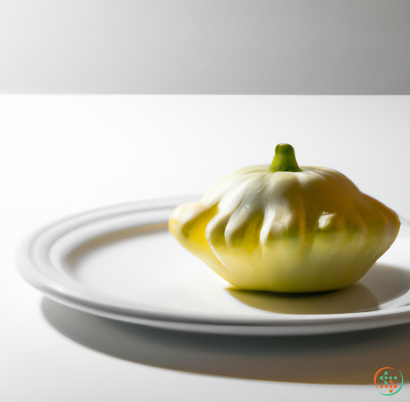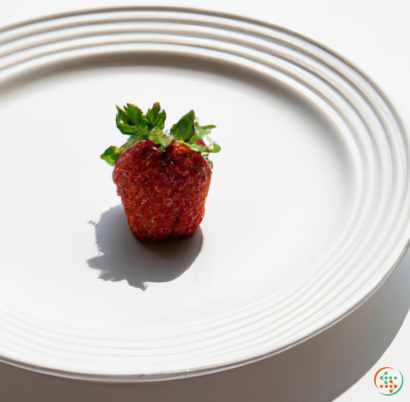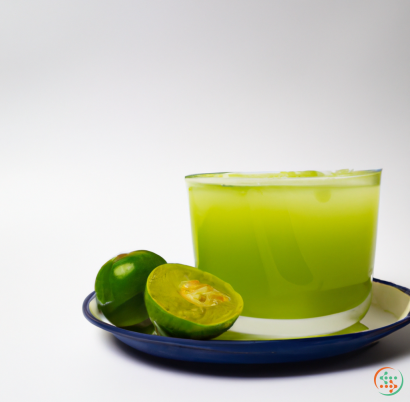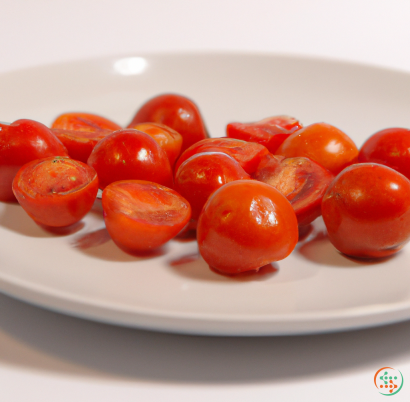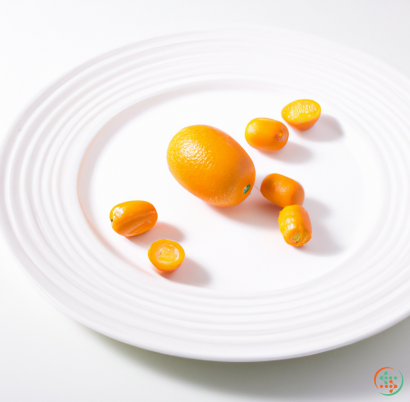Surinam Cherry
Surinam cherries, also known as Spanish cherries, West Indian cherries, Oregon cherries, and pitanga, are a colorful and flavorful exotic fruit that can instantly bring new life to any dish. This unique fruit is native to Brazil and Guyana, with its prime growing regions stretching from Mexico to northern South America, most notably including Brazil, Peru, and Venezuela. It has a complex and sweet flavor with tropical undertones which make it a popular choice among culinary artists and food enthusiasts alike.
Surinam cherries have been a beloved ingredient for hundreds of years in many parts of South America and the Caribbean. They’re most commonly used in pies, ice cream, jams, and other desserts, and their flavor and vibrant color are often paired with lemon or lime for exciting flavor combinations. The flavor of surinam cherries is somewhere between tangy and sweet and is often compared to tart apples and sweet pears.
Surinam cherries are also gaining popularity for their numerous health benefits, including their high antioxidants and protein content. They're typically low in calories and fat, and they're a great source of vitamins A and C, as well as dietary fiber, magnesium, and iron. They can help reduce inflammation, reduce the risk of heart disease, and lower cholesterol levels. Plus, they can help promote healthy skin, hair, and vision.
Surinam cherries can be found either fresh or frozen, but it’s important to choose ones that are plump and lacking bruises or any visible blemishes. Avoid picking cherries that are extremely soft or have black spots on their skins, as these could be signs of spoilage. When shopping for frozen surinam cherries, pick ones that were fresh picked and frozen immediately after—this will help ensure that they’re as flavorful as possible.
To prepare fresh surinam cherries, simply rinse them off in cool water and remove the pit. You can then either eat them raw as an on-the-go snack, or add them to salads, smoothies, desserts, and other recipes. Just one cup of diced surinam cherries can provide almost two grams of dietary fiber, an impressive amount for such a small fruit.
As far as cooking goes, the possibilities are endless. Surinam cherries pair especially well with pork, fish, poultry, and beef dishes, as well as grilled vegetables. They can also be cooked down into syrups and jams, and blended into a compote or pureé to be served with ice cream and other desserts.
Surinam cherries are definitely worth looking out for the next time you’re at the grocery store or farmers market—their unique flavor and long list of health benefits make them a great addition to any meal. Whether you’re looking for something sweet to take on-the-go for a snack, or something exotic to add to a dish, Surinam cherries are a great choice.
Surinam Cherry: From Flower to Plate
The Surinam Cherry (Eugenia uniflora) is a fruit-bearing shrub native to South America, now widely cultivated for its delicious fruit. While it’s not well known in the United States, Surinam Cherries can be found in many Latin American countries, as well as parts of Europe, Asia, and the Caribbean. With its sweet, unique flavor, Surinam cherries have become a popular ingredient in many dishes.
In this article, we will take a closer look at how this exotic fruit is created and ultimately reaches the dinner plate. We’ll explore the entire process of becoming a Surinam cherry–from its botanical origins to its life as a commercially available product.
Origins of the Surinam Cherry
The Surinam Cherry takes its name from Surinam, the old Dutch name for the country of Guyana in South America. The plant is native to the Caribbean and Venezuela, but it has been introduced around the world as an ornamental and fruit-bearing shrub. It’s also called Brazilian cherry, miracle fruit, Barbados cherry, and Cayenne cherry.
The plant grows in both tropical and subtropical climates, preferring temperatures between 60 and 85 Fahrenheit (15-29 Celsius). Young Surinam cherry plants often require some protection from direct sunlight and strong winds. Once the shrub is established, it can typically handle such conditions.
Botany of a Surinam Cherry
Like other members of the family Myrtaceae, the Surinam cherry is an evergreen and highly branched shrub. It can grow to a height of 18 feet (5.4 meters). The branches are very spiral in shape, giving the plant an attractive appearance.
The shrub’s leaves are oval or lance-shaped, and typically bright green in color. They’re usually between 1 and 4 inches (2.5-10 cm) long. Both the upper and lower surfaces are shiny, and both sides have short, sparse hairs.
The Surinam cherry’s flowers appear in late spring to early summer and are very small, measuring no more than 0.2 inches (5 mm) across. The flowers are either single or in clusters of two or three. They are white or cream in color and very fragrant.
After fertilization, the flowers give way to the fruit. The Surinam cherry is a drupe, a specialized form of fruit that has an outer fleshy layer surrounding a stone or pit. The fruit is roughly 1/2 to 1 inch (1.3-2.5 cm) in diameter, and its skin is reddish-orange with a waxy bloom. The fruit’s flesh is juicy and sweet-tart in flavor.
Harvesting and Processing Surinam Cherries
The Surinam cherry’s harvest season varies depending on the region, but it typically runs from late summer to early autumn. The plant has to reach at least a certain degree of maturity before its fruits are ready for harvest. The shrub’s berries also tend to ripen at different times, so several passes through a grove may be needed to collect them all.
Surinam cherries are a fragile fruit and highly perishable, so they must be handled with great care. To reduce breakage and spoilage, the harvesting process involves careful selection to ensure only undamaged, ripe fruit is collected.
Once the cherries are harvested, they should be washed, sorted, and packaged as soon as possible. They are then ready for distribution to local markets, supermarkets, wholesalers, and restaurants.
Uses of the Surinam Cherry
The Surinam cherry is a versatile fruit. It can be eaten raw, cooked into jams, jellies, and syrups, and used as an ingredient in many dishes. The fruit also has medicinal uses. Traditional healers in South America have used it to treat diarrhea and urinary tract infections.
Surinam cherries are also used in the cosmetics and pharmaceutical industries. The oil extracted from their seeds is reputed to have restorative effects on the skin, while the seed powder is used in topical medications designed to reduce inflammation. The fruit’s juice has astringent properties and is used to lessen the appearance of acne.
Surinam Cherry’s Journey to the Dinner Plate
Once the Surinam cherry is harvested, it starts its journey to the dinner plate. This process can take several days or weeks, depending on the type of transport and the distance the fruit needs to travel.
If air freight is used, the cherries are first packaged in cardboard boxes, then loaded onto a truck or container. The box is then shipped by plane to its destination. If cargo ships are utilized, the cherries are loaded into an insulated container with dry ice to keep them cool and fresh during the journey.
When the Surinam Cherries arrive at the market or supermarket, they must be inspected for quality. The unripe, over-ripe, or damaged fruit is usually discarded. The good quality cherries are then weighed, priced, and displayed on the shelves.
Finally, the Surinam cherries reach their destination – the dinner plate. Whether they’re eaten fresh or used as an ingredient in a recipe, these sweet and tart fruits can bring a burst of flavor to any dish.
Conclusion
The Surinam cherry is a unique and flavorful fruit that has been used medicinally and culinarily for many years. It can be enjoyed raw or cooked into jams, jellies, or syrups. It's also used in cosmetics and pharmaceuticals. The journey from flower to dinner plate may take several days or weeks, but it’s well worth it for this delicious and nutritious berry.
| Vitamin A | 0.075 mg | |
| Vitamin C | 0.0263 grams | |
| Vitamin B1 | 0.03 mg | |
| Vitamin B2 | 0.04 mg | |
| Vitamin B3 | 0.3 mg |
| Calcium | 0.009 grams |
Daily Value 1.3 g
|
| Iron | 0.2 mg |
Daily Value 0.018 g
|
| Magnesium | 0.012 grams |
Daily Value 0.4 g
|
| Phosphorus | 0.011 grams |
Daily Value 1.25 g
|
| Potassium | 0.103 grams |
Daily Value 4.7 g
|
| Sodium | 0.003 grams |
Daily Value 2.3 g
|
| Total Sugars | 0.131141 grams |
per 100g
|

